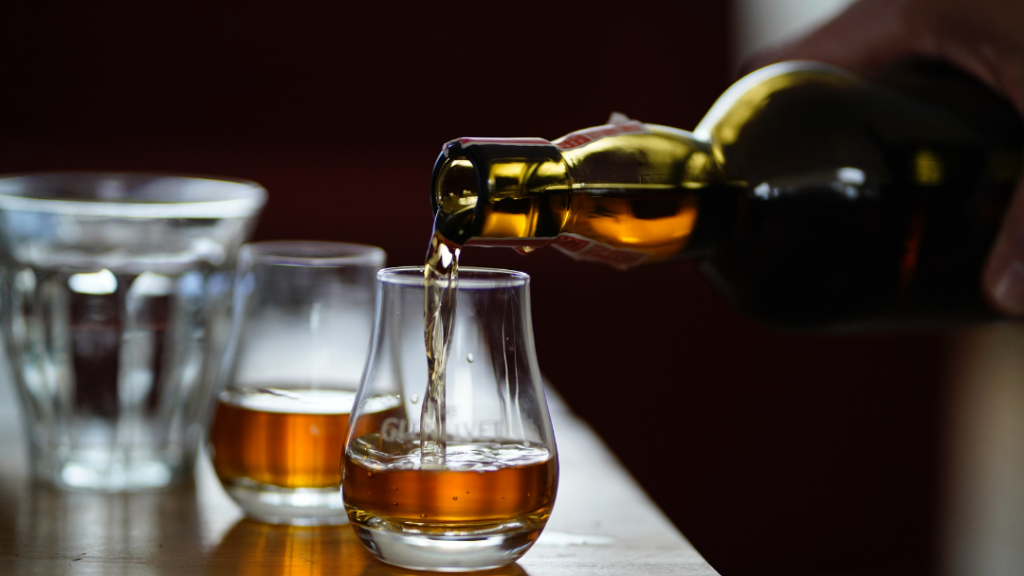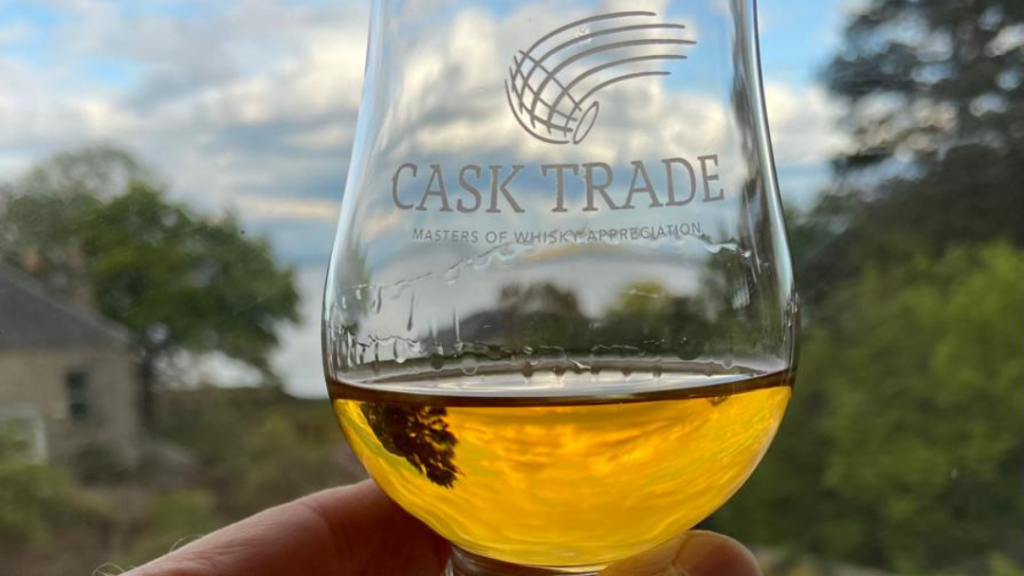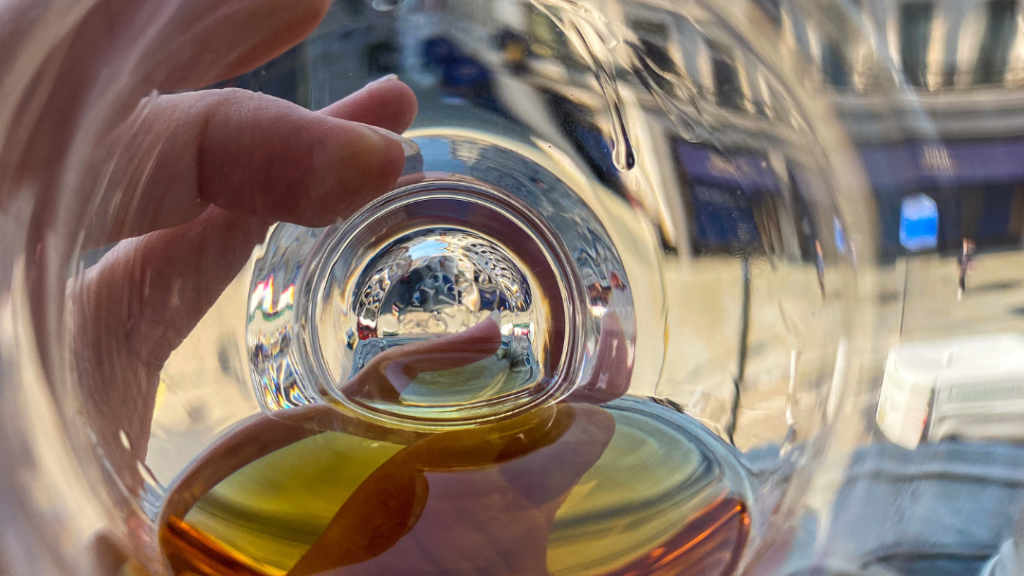Let's set the scene…Your eagerly-awaited package from Cask Trade has finally arrived - the cask strength whisky samples are finally in your possession. Now it’s time to nose, taste, and appreciate. There is, however, more to whisky tasting than you think, and certainly, a few dos and don’ts to get the maximum appreciation when tasting this wonderful spirit. Below is our guide to help you on your journey of whisky discovery.
THE SETTING – The key here is to find the most neutral environment you can. The kitchen, for example, can be a very poor place to taste whisky, especially if there are lingering smells of cooking, coffee etc. Another pitfall is smoke, so steer clear of all cigars and cigarettes in this moment.
THE TIME OF DAY – The best time of day to appreciate whisky is actually in the morning! The reason for this is that this is when your palate is freshest and hasn’t been dulled by various meals and liquid consumption. Therefore, to truly discover the intricate flavours of these wonderful whiskies, try to taste mid-morning rather than late at night. If you wanted an excuse to drink alcohol in the morning, now have it!
THE WHISKY TASTING GLASS – The shape and quality of the glass is incredibly important in enhancing your enjoyment of tasting whisky. At Cask Trade we use Glencairn glasses in our Regent Street tasting room and for all our events. The design curves inwards which funnels and concentrates the flavours of the whisky. This style of glass is widely available and inexpensive. As an alternative, a small wine or port glass could be substituted but avoid large red wine glasses, tumblers and shot glasses.
THE WATER – We suggest a bottle of mineral water at room temperature. Ice and chilled water should be avoided as they will suppress the flavour of the whisky. Tap water can be quite variable, so is not recommended. 
STEP 1- THE COLOUR
Before you start the whisky tasting it’s time to assess the colour and viscosity. If for example the whisky has been aged in a sherry cask, then look for different shades of a reddish mahogany hue. A pale golden colour will indicate a bourbon cask. Whilst age can certainly deepen the colour of the whisky, it isn’t the most reliable indicator as other factors, such as the age of cask the whisky is matured in. Pour the whisky into the glass and hold up against the light. We find that making notes helps the process, especially if you are tasting a significant number of whiskies. An important point of difference is that many whiskies that have been bottled, have been coloured with small amounts of tasteless caramel. Whisky companies do this because the whisky does not age uniformly in the casks, so by shading the colours between batches, they get a consistency of colour. At Cask Trade you are only tasting the real, pure, unadulterated whisky, straight from the cask.
STEP 2 – THE VISCOSITY
Long legs or short legs is what you’re looking for here. Swirl the glass around and you will see what is known as the ‘legs’ tumbling down the glass. Longs legs are a good indication of high alcohol content (which should be the case with cask strength whisky), whilst slow-moving legs indicate a whisky that is quite oily. 
STEP 3 –THE AROMA/NOSE
Our nose can detect literally 100’s of flavours, whilst our tongue can only detect five! Therefore, the nosing of the whisky is so key to appreciation. We suggest you start by bringing the glass slowly towards your nose and then gently smell the whisky. With high strength whisky you have to be careful, as you may anesthetise your nose. If this does happen, a useful trick is to sniff the back of your hand and this should ‘reset’ your olfactory bulb, which is responsible for your sense of smell. At this point, we recommend that you don’t swirl the glass anymore as this can release more ethanol notes, which is not what we are aiming for. Continue to gently nose the whisky by moving the glass away and towards your nose, not forgetting to try nosing with one nostril and then the other. Again, we recommend that you make notes as you go along. We should also point out that there are no wrong or right answers here, as the aromas you are picking up are going to vary from person to person. Read the tasting notes for the same whisky from two industry experts and see how completely different they can be.
Helpful tip - If you are tasting more than one sample from different regions, then start with the non-peated, sweet, fruity, Speyside distilleries and finish with the most earthy, spicy, peaty, Highland/Islays.
STEP 4 – THE PALATE
Our palate can only pick up only five different flavours; sweet, sour, bitter, salt, and savoury. This is why when we have a cold, our food tastes quite bland. However, the tasting and drinking is the fun part, so take a small sip of the whisky and hold it in your mouth for a few seconds, swirling it from one side of your tongue to the other. Again, at this point, we find it useful to take notes as you’re going along. Try to pick out the different types of fruit, sweetness, nutty, smoky, earthy, floral, spicy flavours that you are detecting. Also, assess the texture and mouthfeel. Is it full-bodied, or light and thin? Does it have a creamy texture? Do the flavours and texture change in your mouth? 
STEP 5 – THE FINISH
How is the finish? Does the flavour linger in the back of your throat, or does it dissipate quite quickly? In essence, is it a long or short finish?
STEP 6 – THE REPEAT
Now's the time to repeat the whole process and drink some more whisky! However, this time we recommend that you add a tiny drop of water. The water causes a chemical reaction and opens the whisky up, allowing more flavours and aromas to come to the fore. Try adding a little more water each time and notice the differences until you get to where you reach a point that suits your palate. This can actually change from whisky to whisky, depending on your own preference, and the individual reaction of each whisky to the water.
THE REFILL – How to taste whisky is certainly subjective and it is all about your own appreciation and how you like to drink it. We hope you find the above a useful guide, to maximise your enjoyment in tasting our cask spirits. Our customers are regularly invited to our special tasting room on Regent Street London to sample some of our very special casks. We hope to see you there soon.
If you'd like to visit us and you're interested in purchasing a cask, feel free to book a whisky tasting with the Masters. Contact us here.